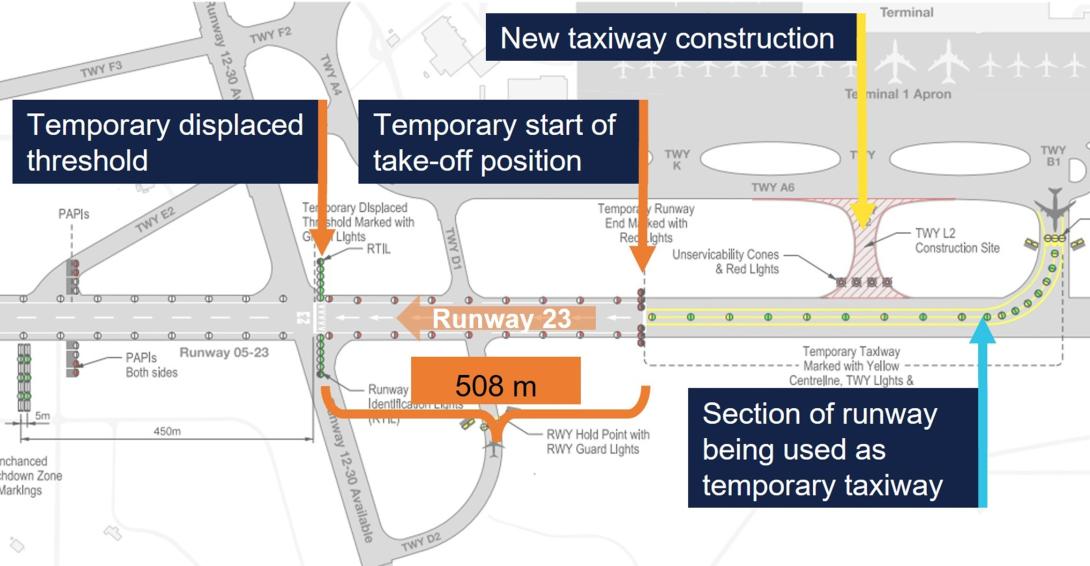
Confusing markings and lights contributed to several passenger aircraft taking off with less runway remaining than the flight crews had used for performance calculations, during taxiway construction works at Adelaide Airport earlier this year.
From 31 March to 20 May 2025, taxiway construction works took place at Adelaide Airport, an ATSB investigation report details.
Due to the works, the eastern end of the runway was being used as a taxiway, with the start of take-off position for runway 25 (and end of runway 05) displaced 650 m.
For aircraft landing on runway 23, a displaced landing threshold was 508 m beyond the temporary SOT position.
During the works period, 13 occurrences were identified, in both day and night operations, where flight crew mistakenly commenced the take-off on runway 23 from the displaced landing threshold, rather than the temporary SOT position.
“This meant the flight crews of multiple aircraft used performance parameters for a longer runway than was used, increasing the risk of a runway overrun, especially if a high speed rejected take-off had been required,” ATSB Chief Commissioner Angus Mitchell said.
The ATSB report notes the initial notice to airmen (NOTAM) released at the start of the runway works used inconsistent terminology and did not refer to the SOT markings being used.
For one of the reported occurrences, it was also identified that air traffic control did not challenge two incorrect readbacks of displaced threshold instead of displaced runway end by the flight crew.
One safety issue consistently identified across the occurrences was that lights and markings in use during the construction works were confusing, despite being in accordance with the standards specified in the relevant Civil Aviation Safety Regulations.
“The relevant manual of standards for aerodromes did not recommend or provide standardised options for movement area guidance signs, or other visual aids, to draw flight crews’ attention to the temporary SOT position, especially when that position was distant from a displaced threshold, and not coinciding with a taxiway or runway intersection,” Mr Mitchell explained.
“This investigation highlights how visual cues for the SOT position may be more difficult to identify than those for aircraft landing on a displaced threshold.”
Mr Mitchell noted the Australian standards for aerodrome signs, markings and lighting are based on the International Civil Aviation Organization (ICAO)’s existing standards, but do not include conspicuous visual cues for a displaced start of take-off position. The next amendment of the relevant ICAO Annex will incorporate construction signage, including for a temporary start of take-off position and stating the take-off run distance available.
The Australian Civil Aviation Safety Authority plans to consider inclusion of this signage in future amendments to the aerodrome manual of standards.
“It remains essential for pilots to review all available information before flight, to understand the visual cues necessary to identify both the threshold and SOT positions,” Mr Mitchell said.
“However, runway safety during runway works requires a system-wide approach, including flight crew, airport and aircraft operators, air traffic service providers, and regulators.”
Read the final report: Multiple runway events during aerodrome works at Adelaide Airport, South Australia, 31 March to 20 May 2025


